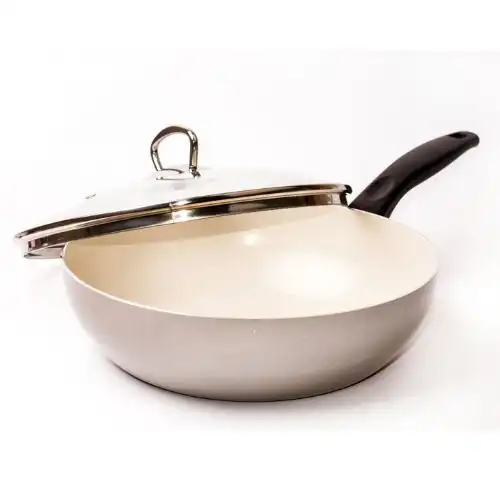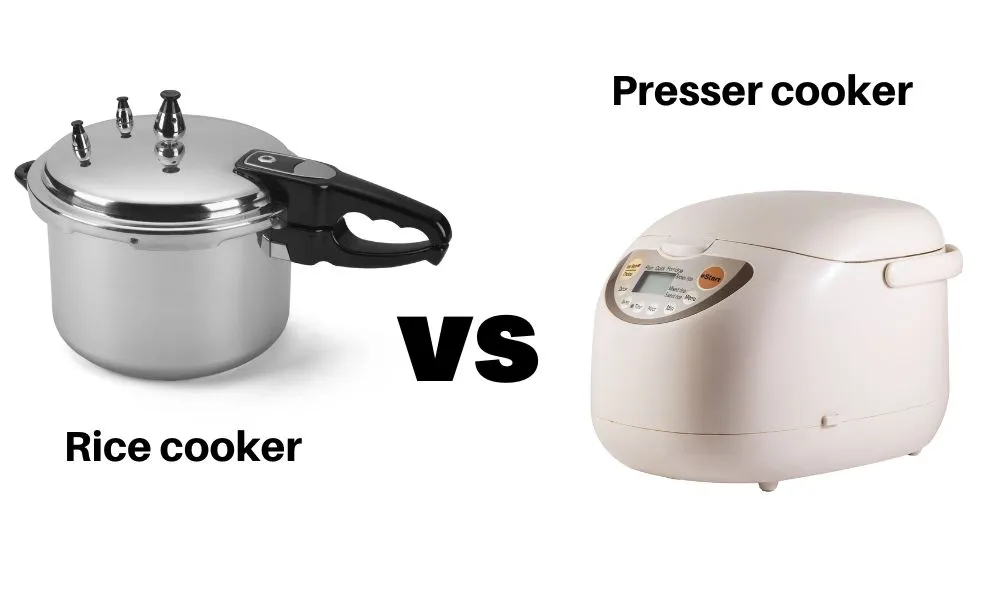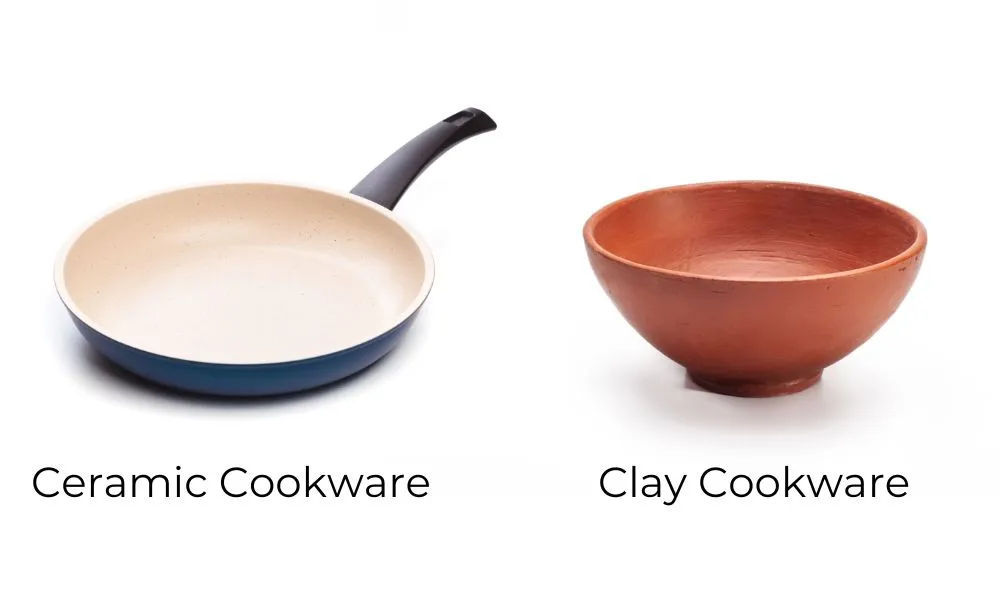Non-stick ceramic cookware and hard anodized cookware are both popular choices for kitchen cookware. But which one is the best? Each type of cookware has its own benefits and drawbacks. Non-stick ceramic cookware is a good option if you are looking for a healthy cooking surface because it doesn’t release harmful fumes or chemicals like some other non-stick coatings can. It is also easy to clean. However, it can scratch easily if you’re not careful. Let’s learn about Non-stick Ceramic Cookware and Hard Anodized Cookware.
Table of Content
A key difference between Non-stick Ceramic Cookware and Hard Anodized Cookware
Here are some key differences between Non-stick Ceramic Cookware and Hard Anodized Cookware:
Material Composition:
Non-stick Ceramic Cookware: This type of cookware is made from a clay-based ceramic coating applied to the cooking surface. It is a non-toxic and eco-friendly alternative to traditional non-stick coatings that may contain chemicals like PFOA and PTFE (commonly found in Teflon).
Hard Anodized Cookware: Hard anodized cookware is made from aluminum that has undergone an electrochemical process called anodization. This process creates a harder and more durable surface, making the cookware resistant to scratches and corrosion.
Non-stick Properties:
Non-stick Ceramic Cookware: The ceramic coating provides a smooth and non-stick surface, allowing for easy food release and minimal use of cooking oil or butter. It is generally considered safer as it does not release harmful fumes even at high temperatures.
Hard Anodized Cookware: While hard anodized cookware is not naturally non-stick like ceramic, some manufacturers may apply a non-stick coating to the surface. However, the non-stick coating on hard anodized cookware may not be as durable as the ceramic coating and might require more careful use and maintenance.
Heat Conductivity:
Non-stick Ceramic Cookware: Ceramic cookware tends to have slightly lower heat conductivity compared to metals like aluminum or stainless steel. This means it may take a bit longer to heat up and distribute heat evenly.
Hard Anodized Cookware: Aluminum, the base material of hard anodized cookware, is an excellent heat conductor. It heats up quickly and evenly, providing consistent cooking performance.
Durability:
Non-stick Ceramic Cookware: Ceramic coatings can be prone to chipping or scratching over time, especially if metal utensils are used. However, with proper care, they can last for a considerable period.
Hard Anodized Cookware: Hard anodized cookware is known for its exceptional durability. The anodization process creates a hard surface that is resistant to wear and tear, making it less likely to chip or scratch.
Cleaning and Maintenance:
Non-stick Ceramic Cookware: Ceramic cookware is generally easy to clean, and many pieces are dishwasher-safe. However, harsh scrubbers or abrasive cleaning agents should be avoided to prevent damage to the ceramic coating.
Hard Anodized Cookware: The non-stick version of hard anodized cookware is also easy to clean, but it may require more gentle care than traditional hard-anodized pieces without a non-stick coating.
In summary, the main differences between Non-stick Ceramic Cookware and Hard Anodized Cookware lie in their material composition, non-stick properties, heat conductivity, durability, and cleaning requirements. Each type has its advantages and considerations, so choosing the right one depends on individual preferences, cooking habits, and maintenance preferences.
Non-stick ceramic cookware
What is a Non-stick Ceramic Cookware?
Non-stick ceramic cookware is a type of cookware that is made from materials like clay and porcelain. It is coated with a non-stick material that makes it easy to cook without food sticking to the surface. Non-stick ceramic cookware is also oven safe, which means that you can put it in the oven without having to worry about it melting or burning. Non-stick ceramic cookware is a good choice for people who want an easy-to-clean cooking surface.

Prons of Non-stick Ceramic Cookware
Non-stick ceramic cookware is a great alternative to traditional cookware because it offers many benefits.
- Ceramic cookware is non-stick, which means that food doesn’t stick to the pan and it’s easy to clean.
- Ceramic cookware is durable and scratch resistant, so it will last for years.
- The cookware is safe to use because it is oven and dishwasher-safe and it doesn’t contain any harmful chemicals.
- It heats evenly and retains heat well, which results in better cooking performance.
Cons of Non-stick Ceramic Cookware
There are a few disadvantages to using non-stick ceramic cookware.
- The coating can easily scratch and flake off, exposing the cook to harmful chemicals.
- Another disadvantage is that non-stick surfaces can release toxic fumes when heated above a certain temperature.
- These fumes can be harmful if inhaled, so it’s important to always follow the manufacturer’s instructions for use.
Hard anodized cookware
What is hard anodized Cookware?
Cookware is a necessary part of any kitchen, and there are many different types to choose from. One option is hard anodized cookware. This type of cookware is made from aluminum, which is then treated with an electrical current that creates a hardened surface.

Prons of hand anodized
One of the newer materials on the market is hard anodized cookware. This type of cookware is made from aluminum, but it has been treated with an anodizing process that makes it harder than regular aluminum. This makes it a great choice for cooks who are looking for a durable material that can withstand heavy use. Hard anodized cookware is also non-stick, which makes it easy to clean.
Cons of hand anodized
One disadvantage of hard anodized aluminum cookware is that it can be difficult to clean. The hard surface can be tough to scrub off food particles and stains. In addition, the dark color of the cookware can make it difficult to see what is cooking inside.
Another disadvantage is that hard anodized aluminum cookware can be expensive. This type of cookware tends to be more expensive than other types of aluminum or stainless steel cookware.
Final Thought
In conclusion, non-stick ceramic cookware and hard anodized cookware are both great choices for your kitchen. However, each type of cookware has its own unique benefits that may make it a better fit for your needs. Non-stick ceramic cookware is ideal for those who want an easy-to-clean cooking surface, while hard anodized cookware is perfect for those who need a durable and tough cooking surface. So, which is better for you? Only you can decide that.



